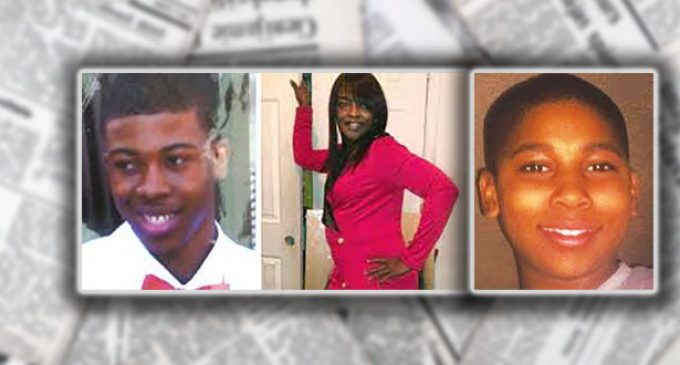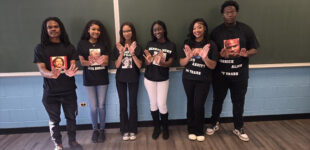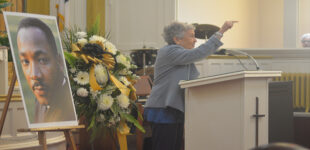Analysis: 2015 ends with more police injustice

Above: Quintonio LeGrier, Bettie Jones, Tamir Rice
By Cash Michaels
For the Chronicle
The week began with the city of Chicago in mourning after police there “accidentally” shot and killed 55-year-old Bettie Jones on Dec. 27, an unarmed downstairs neighbor who had just opened the door to let in officers responding to a domestic disturbance call. Chicago police also killed college student Quintonio LeGrier at the same address, who was said to have had a mental illness. LeGrier’s father called police for assistance when his son became angry and began hitting the door with a baseball bat. Ms. Jones was a devout churchwoman, neighbors and relatives said. They couldn’t understand why Chicago police couldn’t use tasers to subdue young LeGrier, instead of deadly force.
Embattled Chicago Mayor Rahm Emmanuel rushed home from a 16-day vacation, amid growing cries for his resignation, and a federal investigation into a string of prior police killings in his city.
On Monday in Cleveland, Ohio, after more than a year, Cuyahoga County Prosecutor Timothy McGinty announced that a grand jury did not indict two Cleveland police officers for the November 2014 fatal shooting of 12-year-old Tamir Rice, who had only a pellet gun on him in a park when the officers immediately shot the child within two seconds of pulling up on the scene. It became clear that McGinty never sought to indict the officers, but rather cajole the grand jury not to hold them responsible, claiming that the officers feared for their lives.
Tamir Rice’s family and their attorneys blasted McGinty, charging that it was never his intention to hold the police officers accountable, and instead blamed the young boy for “looking older and bigger than his age.”
Back in Chicago on Tuesday, Chicago Police Officer Jerry Van Dyke pled not guilty to six counts of murder after being seen on an October 2014 police video allegedly shooting 17-year-old Laquan McDonald 16 times, most of the shots hitting the young black teen as he laid helpless in the middle of the street, surrounded by other police officers who never fired a shot.
Thousands of demonstrators marched, rallied and blocked traffic in downtown Chicago leading up to the Christmas holidays to protest the yearlong delay of the release of the McDonald video, demanding Mayor Emmanuel’s resignation in the aftermath of the firing of the police superintendent there. McDonald’s family had already been paid a $5 million settlement by the Chicago City Council long before the video’s release.
These cases, just this week, in addition to a grand jury in Texas last week refusing to indict any officers for the death of Sandra Bland, a 28-year-old black female motorist found dead in her jail cell after she was arrested for a minor traffic violation, have set the stage for a tension-filled 2016 between law enforcement and the communities of color which they serve. Thanks to the Black Lives Matter movement, young people across the nation have taken to the streets to peacefully, but forcefully, hold police departments accountable for their seemingly unbridled use of excessive force against African-Americans.
In Minnesota, demonstrators blocked an airport terminal after causing chaos at the Mall of America right before Christmas, all to protest the police shooting death of Jamar Clark. Authorities have refused to release the video of the deadly encounter.
Observers contrast these recent incidents with what did not happen just last Saturday night at a Louisville, Ky. mall, St. Matthew, where 2,000 teenagers reportedly engaged fights, disruptive behavior, harassment of customers and store employees, and confrontations with police officers to the point where reinforcements from neighboring towns had to be called, and the mall closed an hour early. Local reports by area media say black teenagers were involved.
And yet, there were no arrests, and not one officer fired a shot, even though there were reports of gunshots heard prior to the police arriving.
When asked why there were no arrests for what many who were there called “a riot,” a police spokesperson said, “Our focus was on restoring order and dispersing the crowd.”















